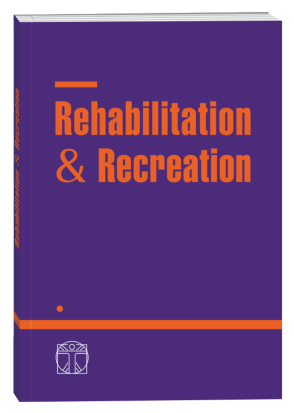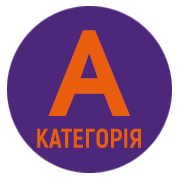MODERN ASPECTS OF FORMATION OF NATIONAL TEAMS IN PLAYING SPORTS IN THE CONDITIONS OF GLOBALIZATION
DOI:
https://doi.org/10.32782/2522-1795.2024.18.3.22Keywords:
team formation, international competitions, ageAbstract
At present, among team sports, including volleyball, there is an intensification of sports competition in the international arena, which is due to the trends of professionalization, commercialization, and globalization. Competitive activity in volleyball is constantly changing, taking into account the trends in the development of the game. The system of international competitions is expanding, and more and more attention is being paid to the preparedness of players of different playing roles, which prompts the justification of modern approaches to the formation of national teams. Material and Methods. The study analyzes the ratio of medals won by women’s national volleyball teams (17 teams) according to the results of the Olympic Games and World Championships. In order to determine the peculiarities of the formation of national volleyball teams, the data of 288 athletes was analyzed, taking into account their age. The indicators of the competitive activity of the 15 best-qualified volleyball players in the world, taking into account their playing roles, which are marked in the ranking of the International Volleyball Federation based on the results of their performance in the Nation League in 2023, are determined. Results. The results of the study show that at the present stage of the development of volleyball, there is a change in leadership positions based on the results of athletes’ performances in major international competitions, which is confirmed by its development in South America, North America, and East Asia. It has been determined that one of the leading factors in the formation of national teams in volleyball is the age of the players, their professional experience in international competitions, and the number of Olympic training cycles. Based on the results of the performance of the Brazilian women’s national volleyball team, which is currently the world’s leading team, it was found that the tendency to involve players aged 26 to 31 years remains in the formation of national teams. At the same time, in recent years, the number of female athletes over the age of 32 has been gradually increasing, with the largest number of them in 2020. Conclusions. The analysis of the development of volleyball has shown that the use of modern world experience in the rational formation of the composition of women’s national volleyball teams has established that an integral component is the age of the players, their professional experience on the national team, and the presence of universal abilities to perform several game roles. At this stage of volleyball’s development, there is a tendency to increase the age of female athletes involved in national teams, which ensures effective rotation over several Olympic cycles.
References
Борисова О., Шутова С., Нагорна В., Шльонська О., Серебряков О., Мітько А. Характеристика змагальної діяльності збірних команд України зі спортивних ігор на міжнародній арені. Спортивна наука та здоров’я людини. 2020. № 2(4). С. 15–22. https://doi.10.28925/2664-2069.2020.2.3.
Борисова О., Дутчак М., Шльонська О. Аналітичний огляд наукових досліджень за проблемою підготовки спортсменів різних ігрових амплуа в командних ігрових видах спорту. Спортивна наука та здоров’я людини. 2024. № 1(11). С. 39–57. https://doi.org/10.28925/2664-2069.2024.14.
Кириленко О.М. Розвиток інституту спорту в умовах глобалізації. Інформаційний вісник НТУУ «КПІ». Політологія. Соціологія. Право. 2010. № 4(8). С. 48–53.
Сушко Р., Дорошенко Е. Технологія підготовки збірних команд у спортивних іграх з урахуванням чинників міграції. Спортивний вісник Придніпров’я. 2019. № 3. С. 68–77. https://doi.10.32540/2071-1476-2019-3-068.
Хіменес Х., Пітін М., Дмитренко А. Особливості сучасних систем змагань у баскетболі (на прикладі NBA та професійних турнірів під егідою FIBA). Спортивні ігри. 2020. № 1(15). С. 85–94. https://doi: 10.15391/si.2020-1.08.
Шинкарук О., Дутчак М., Павленко Ю. Олімпійська підготовка спортсменів в Україні: проблеми і перспективи. Спортивний вісник Придніпров’я. 2013. № 1. С. 82–86.
Шинкарук О. Пошук та розвиток спортивного таланту: ретроспективний та сучасний аналіз. Теорія та методика фізичного виховання. 2020. № 2. С. 47–58. DOI: 10.32652/tmfvs.
Alonso B.J. & Giambattista R. The Influence of PROFUT Regulation on Brazilian Football Clubs Earnings Quality. Book of Abstracts – The 14th ESEA Conference on Sport Economics. 2023, 21 p.
Bradshaw H., Howells K., Lucassen M. Abandoned to manage the post-Olympic blues: Olympians reflect on their experiences and the need for a change. Qualitative Research in Sport, Exercise and Health. 2021. P. 1–18. https://doi.org/10.1080/2159676X.2021.1993974.
Gaenssle S. & Feddersen A. Economics of Superstars in Basketball: An Empirical Analysis of WNBA and NBA. Book of Abstracts – the 14th ESEA Conference on Sport Economics. 2023, 79 pp.
Fellingham G.W. Evaluating the performance of elite level volleyball players. Journal of Quantitative Analysis in Sports, De Gruyter. 2022. Vol. 18(1). P. 15–34. https://doi.10.1515/jqas-2021-0056.
Kostiukevych V., Imas Ye., Borysova O., Dutchak M., Shynkaruk O., Kogut I. at al. Modeling of the athletic training process in team sports during an annual macrocycle. Journal of Physical Education and Sport. 2018. Vol. 18(1). P. 327–334. https://doi.10.7752/jpes.2018.s144.
Kostiukevych V.M. Model indicators of collective interactions of highly qualified football players during the game. Health, Sport, Rehabilitation. 2019. Vol. 5(4). P. 33–40. https://doi.10.34142/HSR.2019.05.04.04.
Kostiukevych V., Shchepotina N., Shynkaruk O., Kulchytska I., Borysova O., Dutchak M., Vozniuk T. еt al. Training process construction of the qualified volleyball women players in the preparatory period of two-cycle system of the annual training on the basis of model training tasks. Journal of Physical Education and Sport, 2019. Vol. 19(2). P. 427–435. https://doi.10.7752/jpes.2019.s2063.
Kozina Z., Polishchuk D., Polishchuk S. Integral testing indicators individual features of various playing volleyball players at the specialized basic training stage. Health Technologies. 2023. Vol. 1(2). P. 6–21. https://doi.org.10.58962/HT.2023.1.2.6-21/.
Miller T. Globalization and sport: playing the world. 2001, 160 p.
Marković S., Ćuk I., Živković A. The impact of information technologies on the scouting process in sports games. International scientific conference on information technology and data related research. 2020. P. 240–245. https://doi.org/10.15308/Sinteza-2020-240-245/.
Nalbantis G. & Kühne P. Substitution effects and the demand for over-the-top sports broadcasts – The case of German Volleyball. Book of abstracts – The 14th ESEA Conference on Sport Economics. 2023, 83 p.
Sarafinjuk L.A., Khapitska O.P., Fedoniuk L.Ya., Fomina L.V., Merkulova D.A., Kyrychenko Yu.V. еt al. The peculiarities of the body’s external structure and indicators of central hemodynamics of volleyball players of different positions. Wiadomości Lekarskie, 2021. Tom LXXIII, No 5. P. 920–924. https://doi:10.36740/WLek202005115.
Smith-Ditizio A. & Smith, A.D. Olympic Games, media coverage and brand image performance from fan and gender perspectives. Benchmarking: An International Journal. 2023. Vol. 30(2). P. 503–531. https://doi.org/10.1108/BIJ-02-2022-0117.
Taylor B., & Garratt D. The professionalisation of sports coaching: relations of power, resistance and compliance. Sport, Education and Society. 2010. Vol. 15(1). P. 121–139. https://doi.10.1080/13573320903461103.
Downloads
Published
How to Cite
Issue
Section
License
Copyright (c) 2024 O. L. Shlonska, O. V. Borysova, Yu. I. Yakusheva

This work is licensed under a Creative Commons Attribution-NonCommercial-NoDerivatives 4.0 International License.












